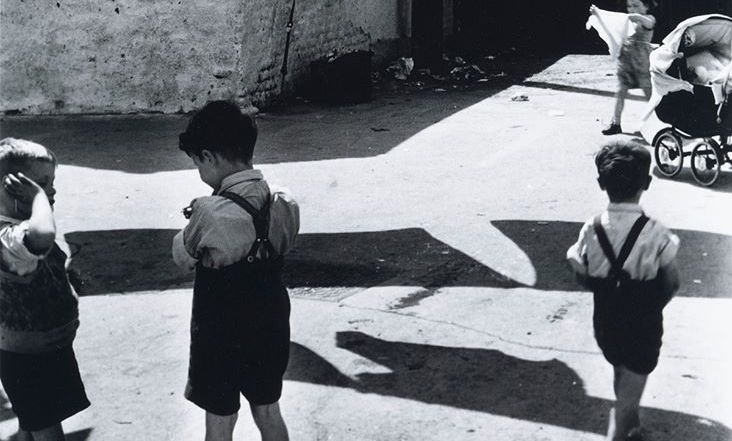“Today photographic images are ubiquitous; we take and share pictures on our smartphones constantly. Yet, a photograph taken by a skilled artist still has the power to stop us in our tracks, make us look closely and can ignite our imagination and elicit a sense of nostalgia.” These words greet you at the door of the National Gallery’s first photography exhibit, The View of Ireland: Collecting Photography. The exhibition is intended to celebrate all things Irish – from Irish history to famous Irish figures. One picture even contains an old Lucozade box, a nod to a uniquely Irish product that we all miss dearly when we are hungover abroad.
The exhibit is composed of photographs which are particularly stunning on a technical level. Eamonn Doyle’s outstanding piece on the centre of the back wall, Untitled 7, from the series i, immediately catches the eye through its use of contrast. The image portrays an elderly woman wearing a striking yellow coat, and the light in the picture is otherworldly. The photo was taken in Dublin and appears to be on O’Connell Street. Such a beautiful portrayal of an everyday occurrence, a woman crossing the street, is an incredible testament to the artistic capabilities of photography.
The exhibition is imbued with nostalgia, as it documents Irish culture and history without feeling like an episode of Reeling in the Years. And of course, no Irish exhibition would be complete without religious iconography. Crosses crop up in Pentti Sammallahti’s work documenting the pilgrimage up Croagh Patrick. Also included in this exhibition is the only known photograph of Daniel O’Connell, placed in the centre of the room.
Jane Bown’s portrait of Sinead O’Connor is one of the most striking features of the exhibit. It portrays O’Connor looking downward, in black and white, with a cigarette behind her ear. The image of O’Connor is delicately placed alongside a photograph of Francis Bacon on Primrose Hill and a portrait of Peter O’Toole. Aligning these three iconic Irish figures pays homage to Ireland’s vast cultural impact, be it in music, film or other art forms.
A discussion of what photography means to each of the photographers injects the exhibition with the personal. This touch underlines the exhibit’s success in celebrating Irish culture as well as photography as an art form. A commissioned piece by Dragana Jurišić, Tarantula, is exemplary of contemporary photography, as it stands alone against the majority of the exhibition which leans more toward a documentary style. Though the work is not directly related to Ireland, this piece shows the National Gallery’s commitment to expanding their engagement with photography.
Though distinctly Irish, the exhibit could be enjoyed by visitors from all backgrounds. Celebrating the many nuances of Irish culture and history, this small exhibition is an important step toward curation which recognises photography as an art form, and shows the National Gallery’s desire to incorporate more new media elements in their space.






